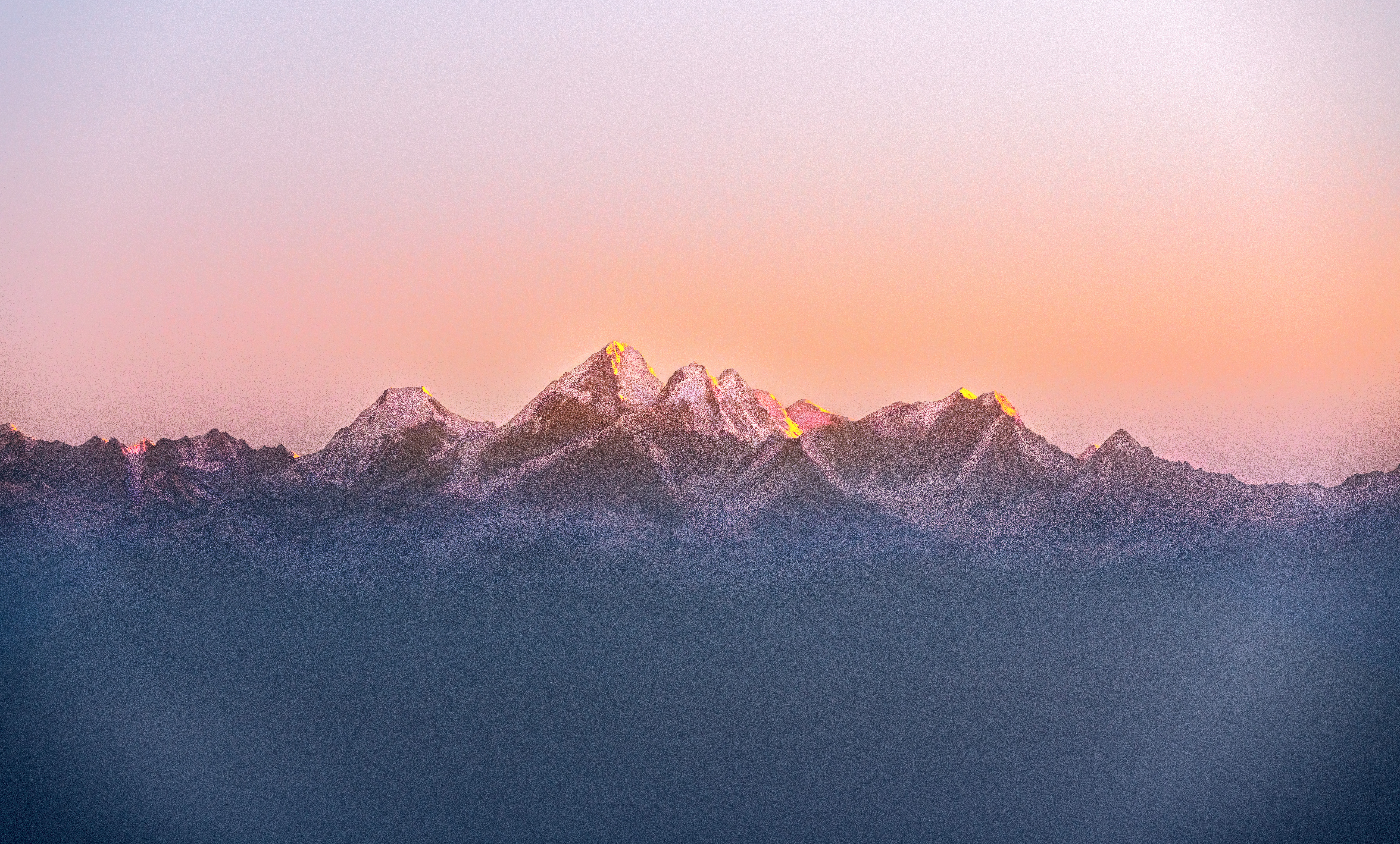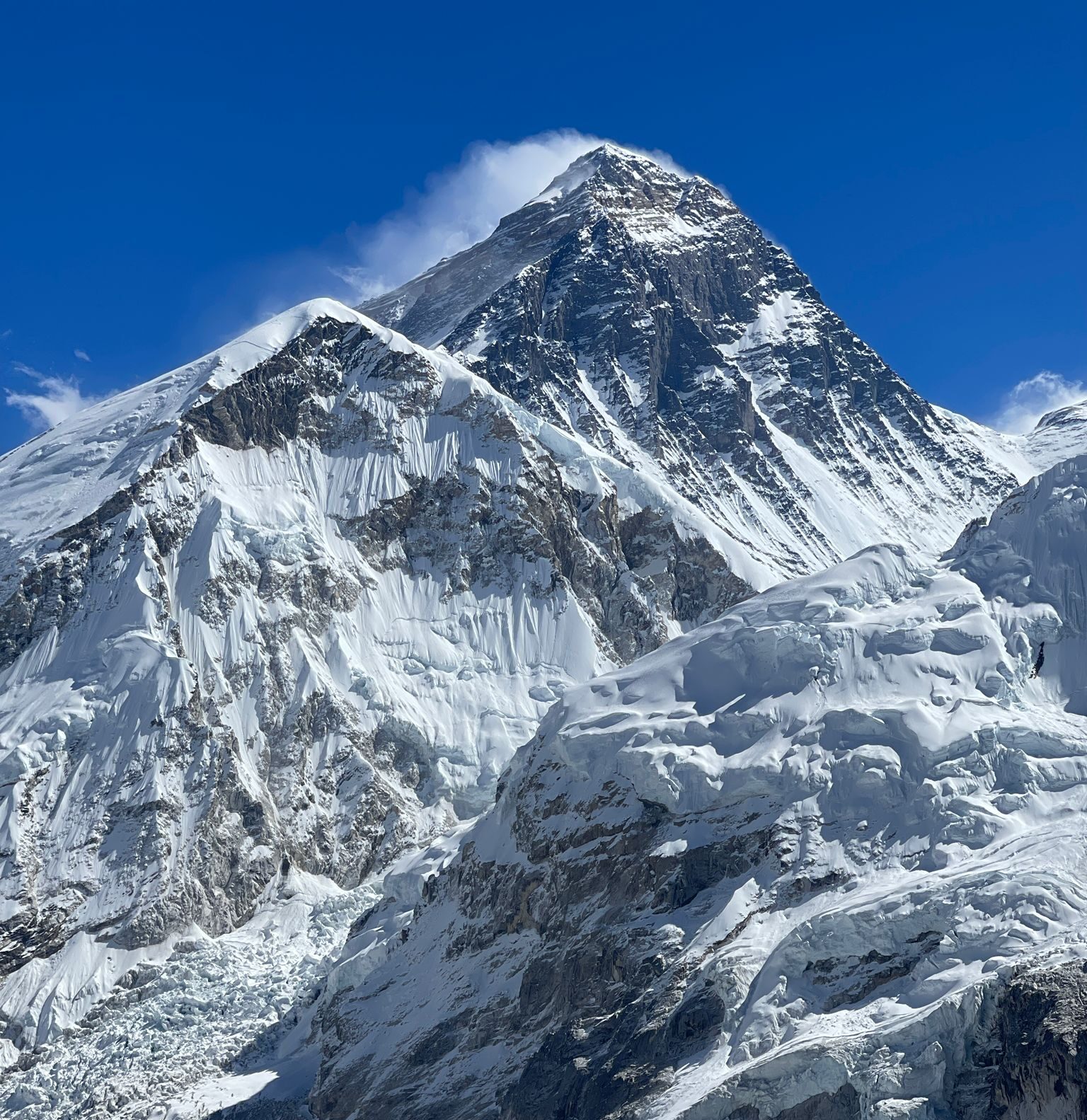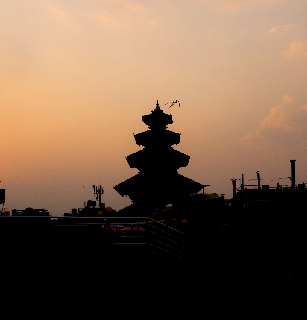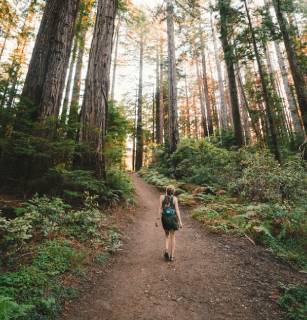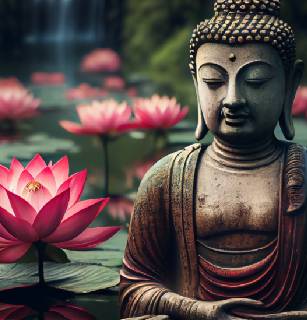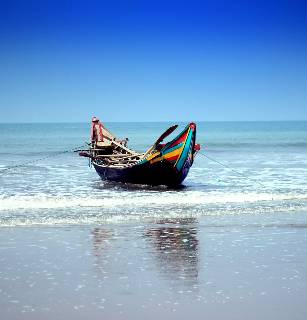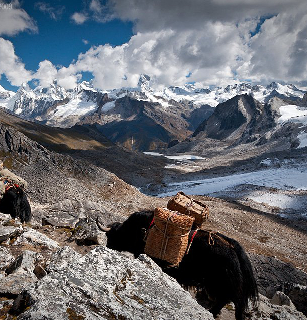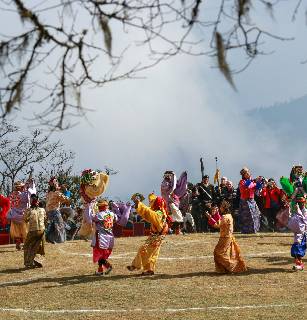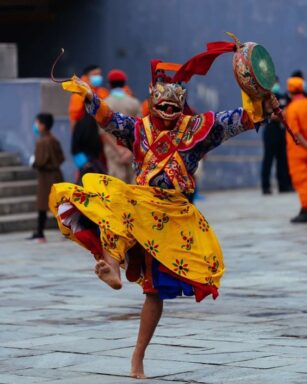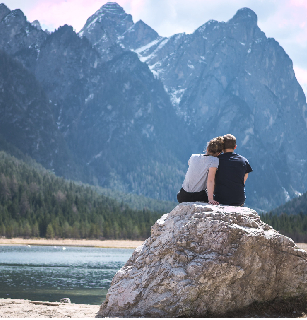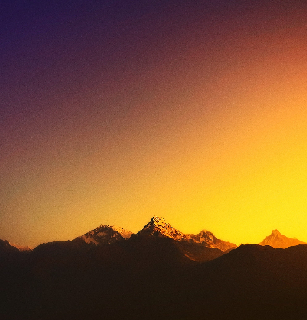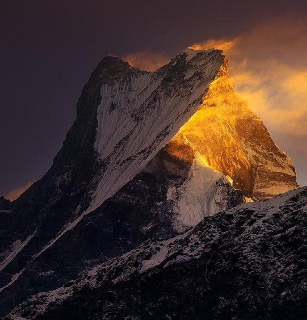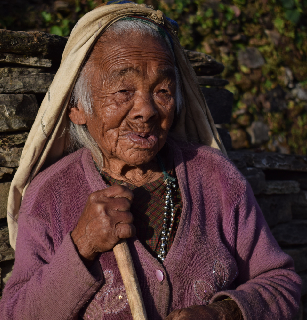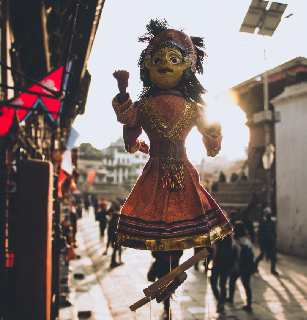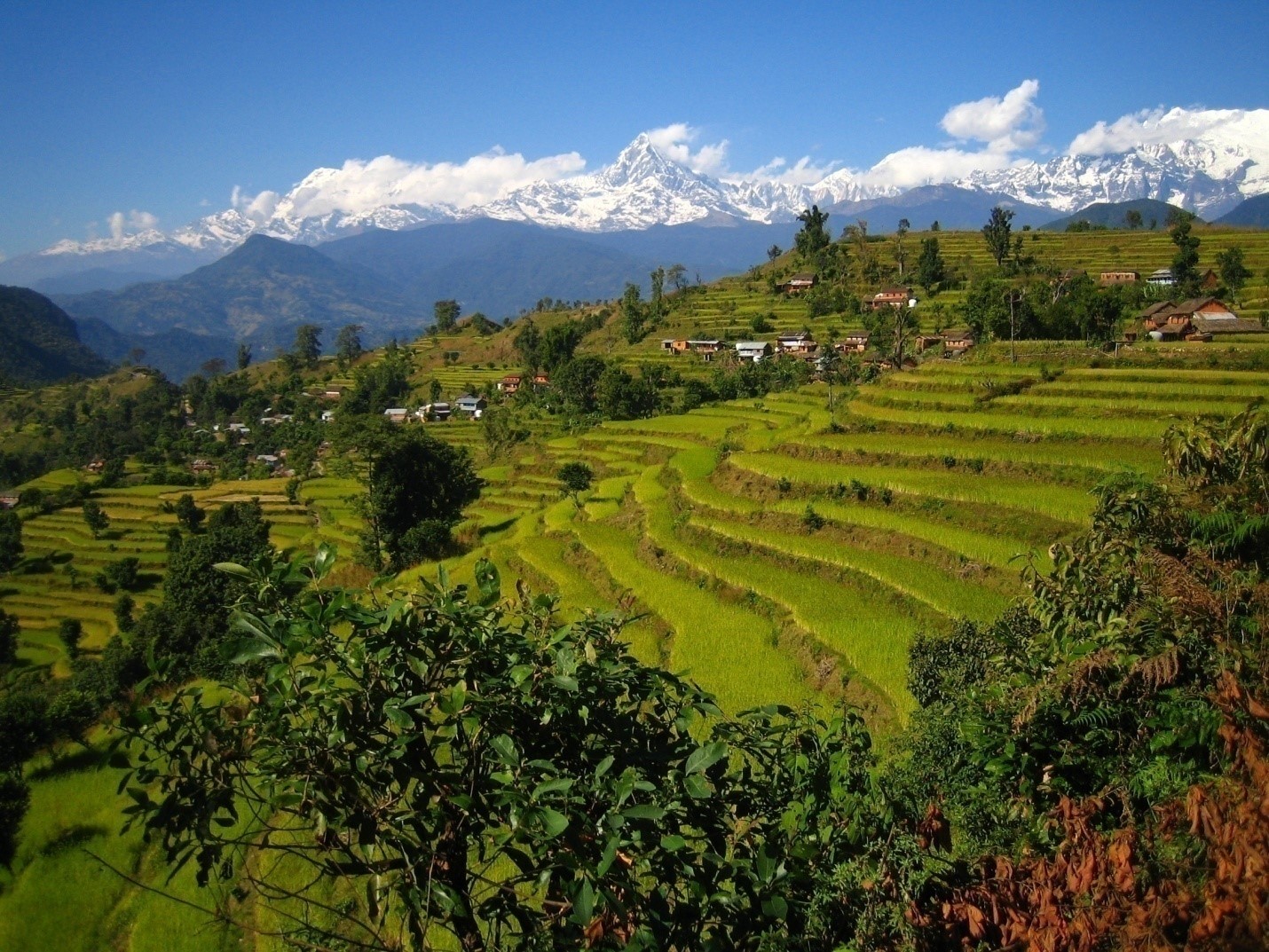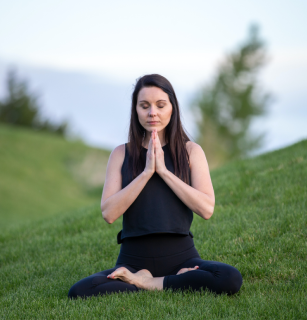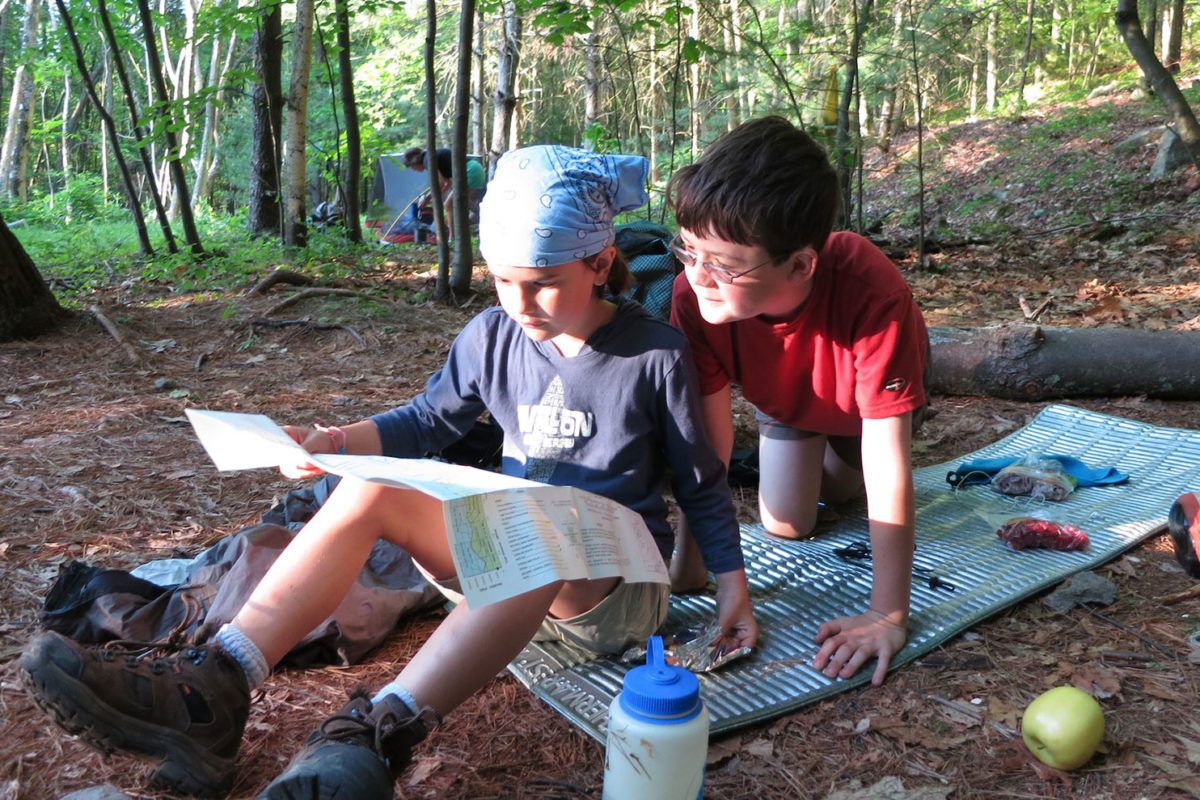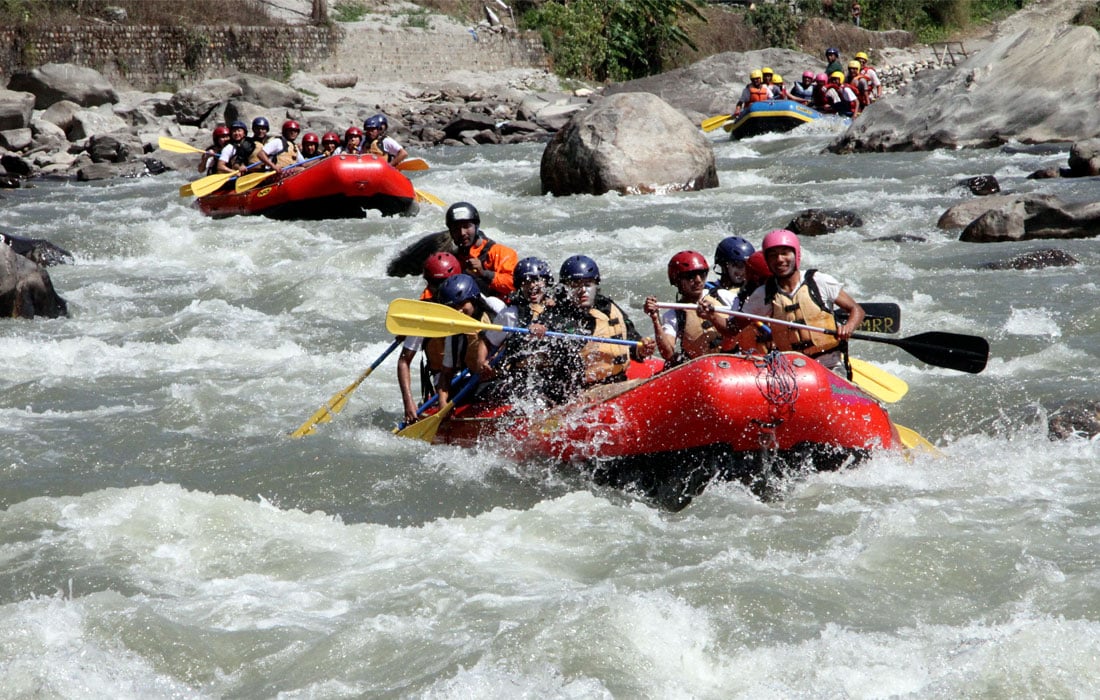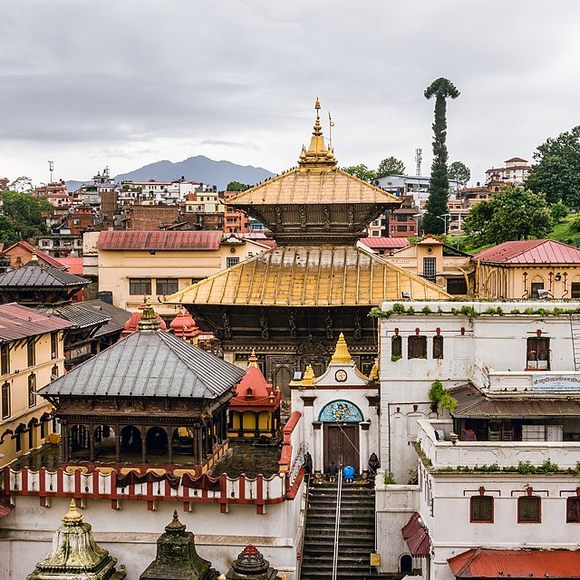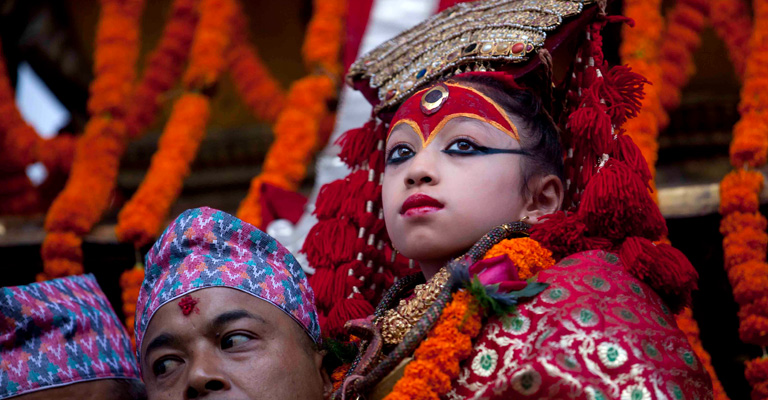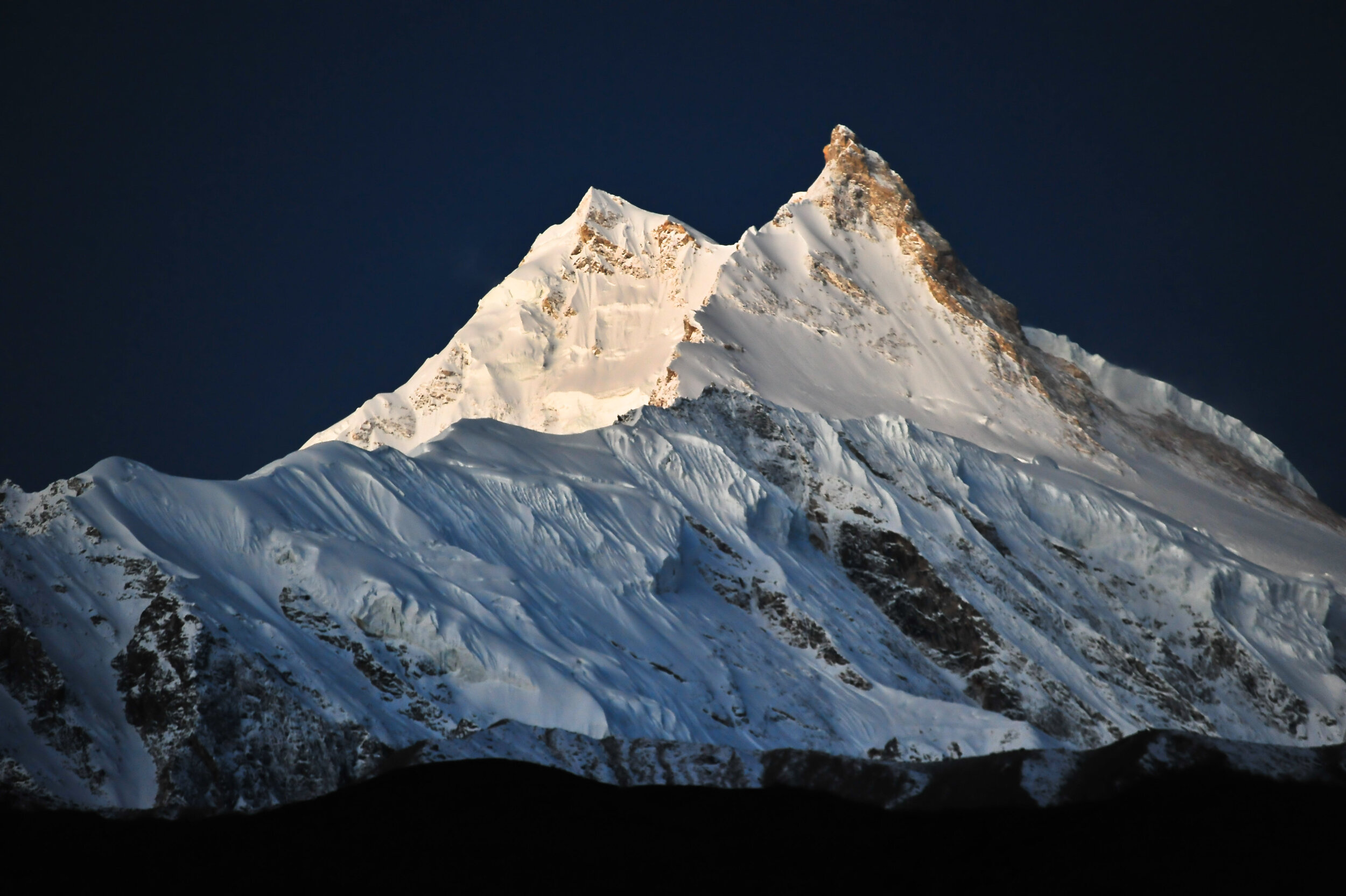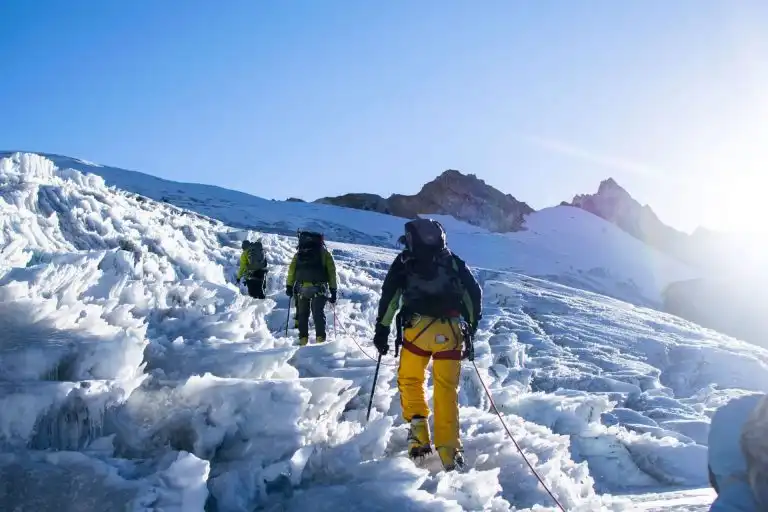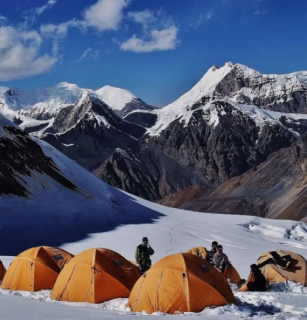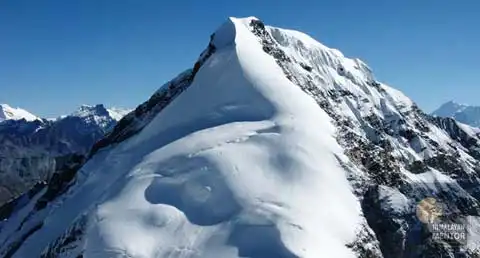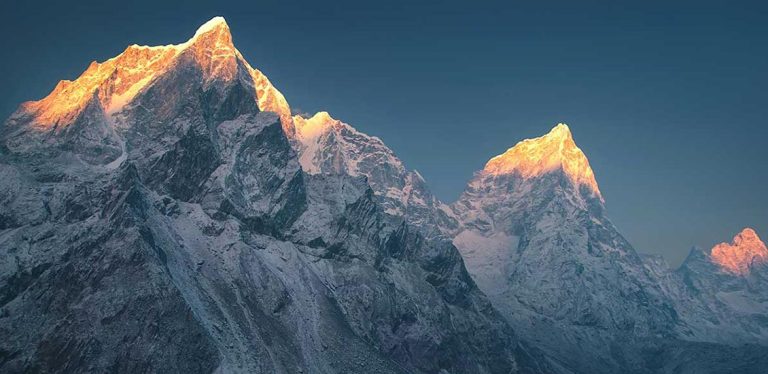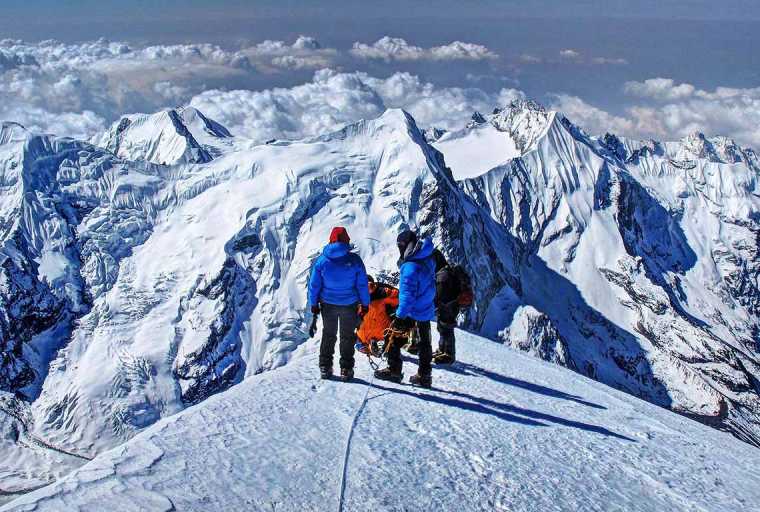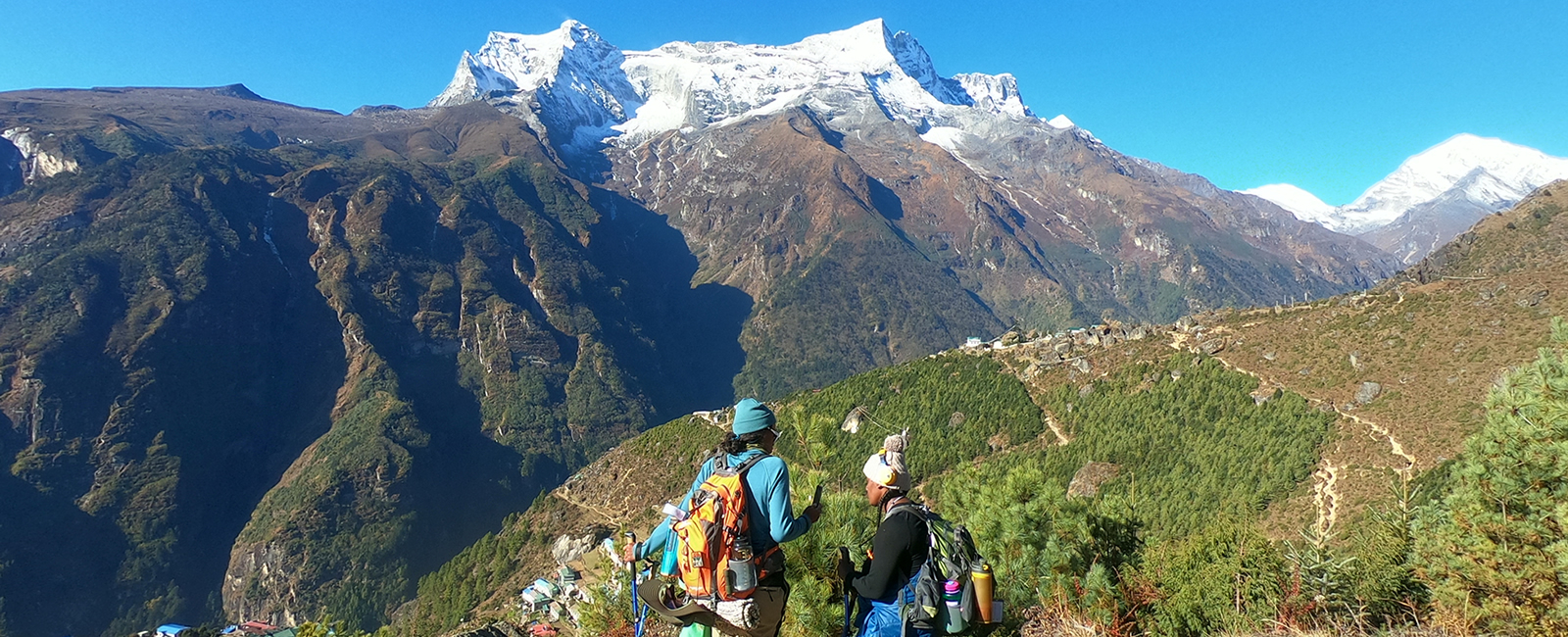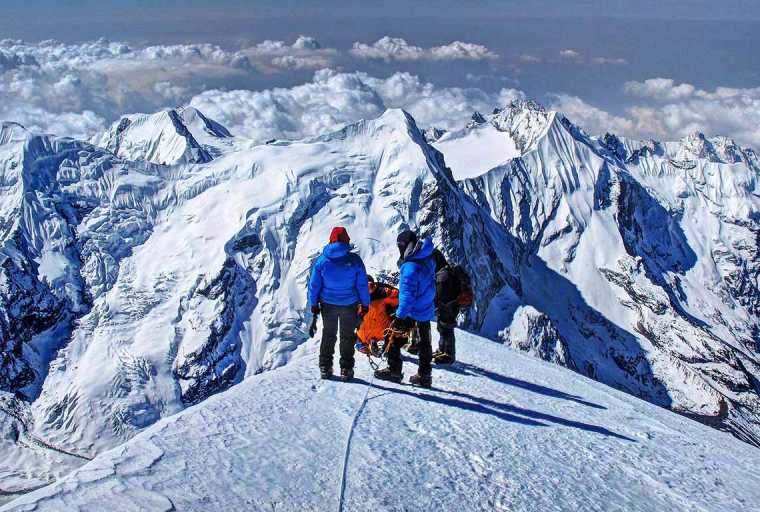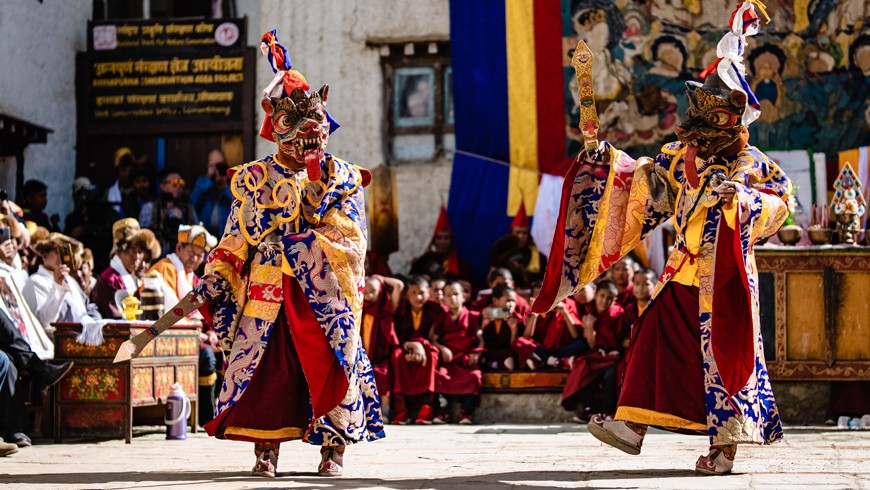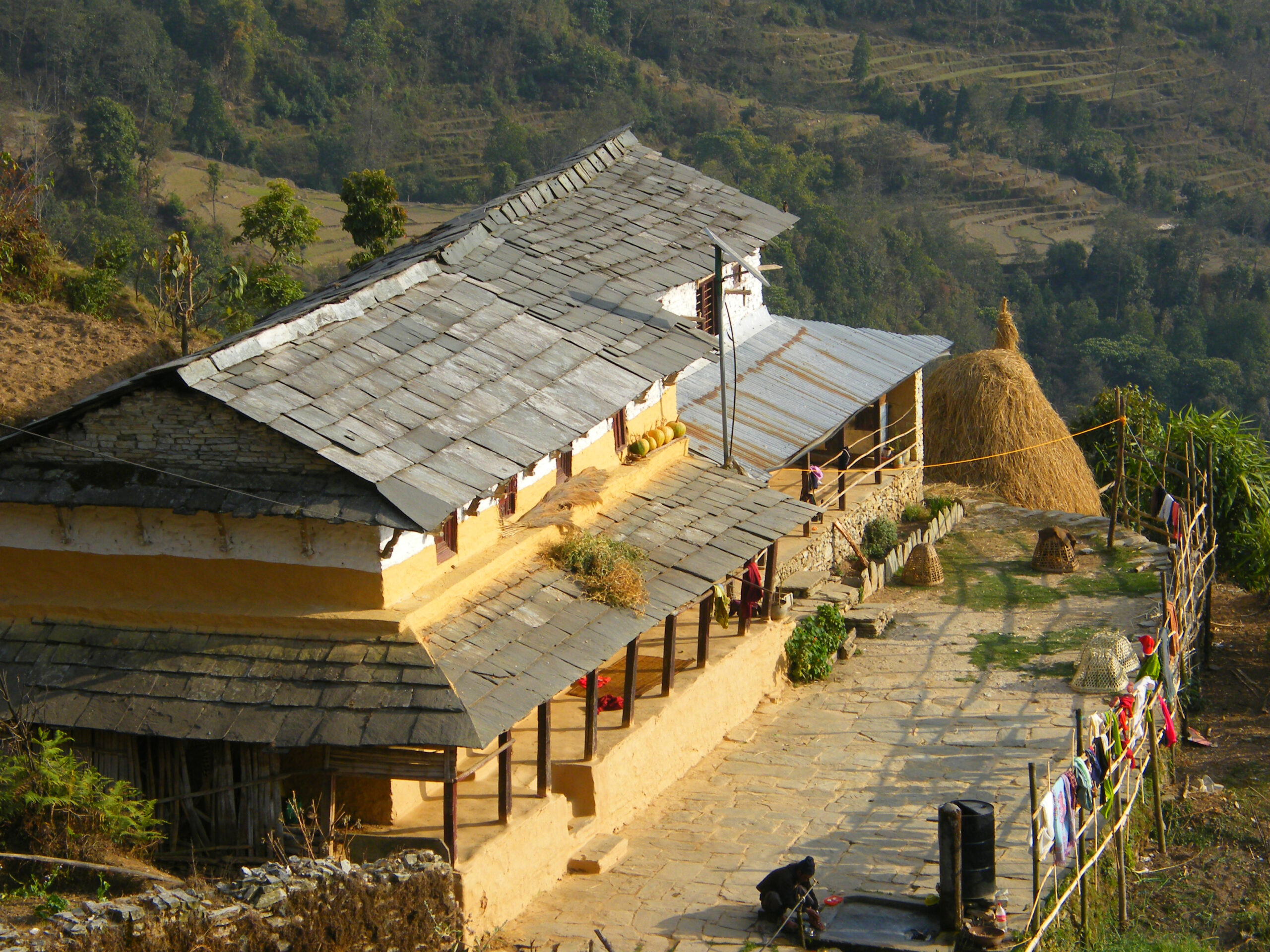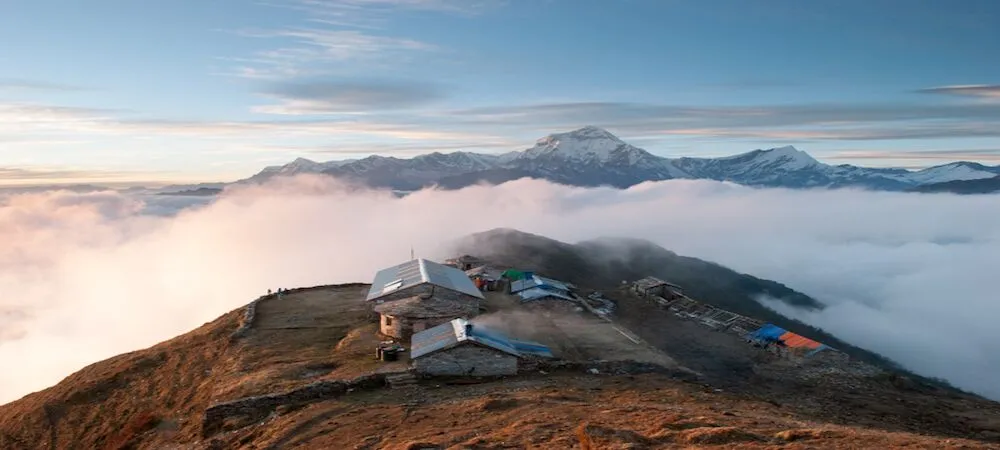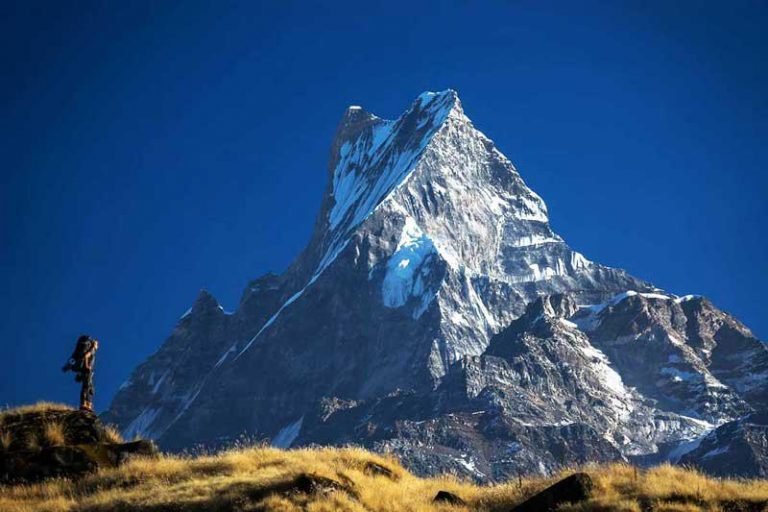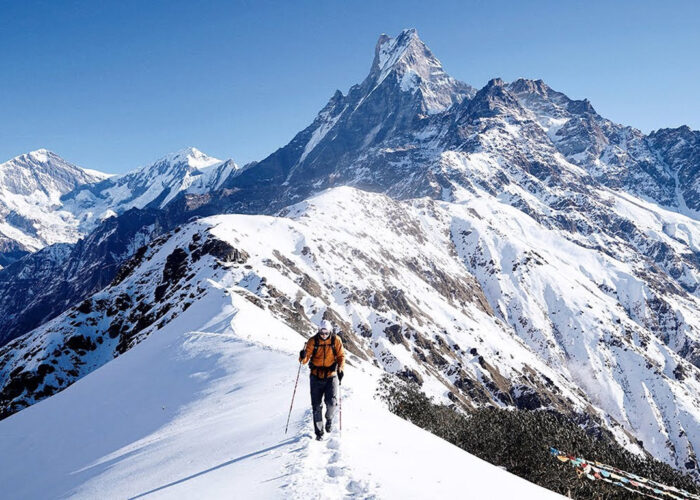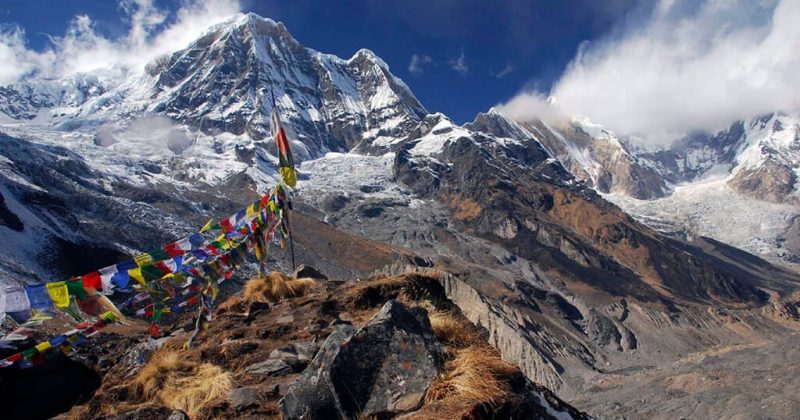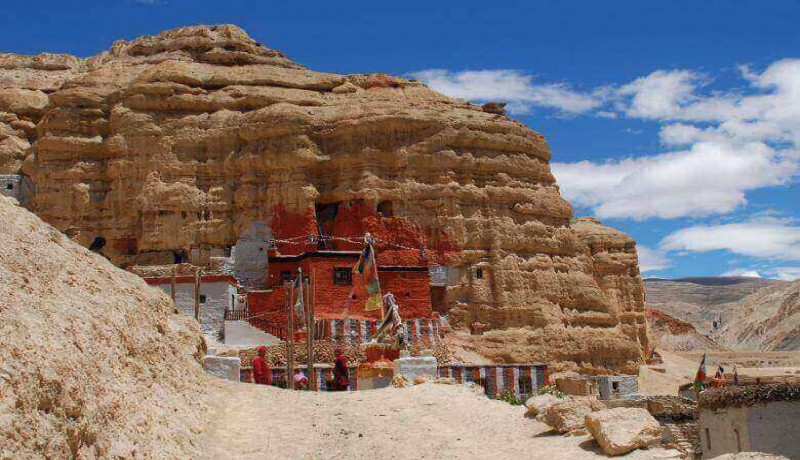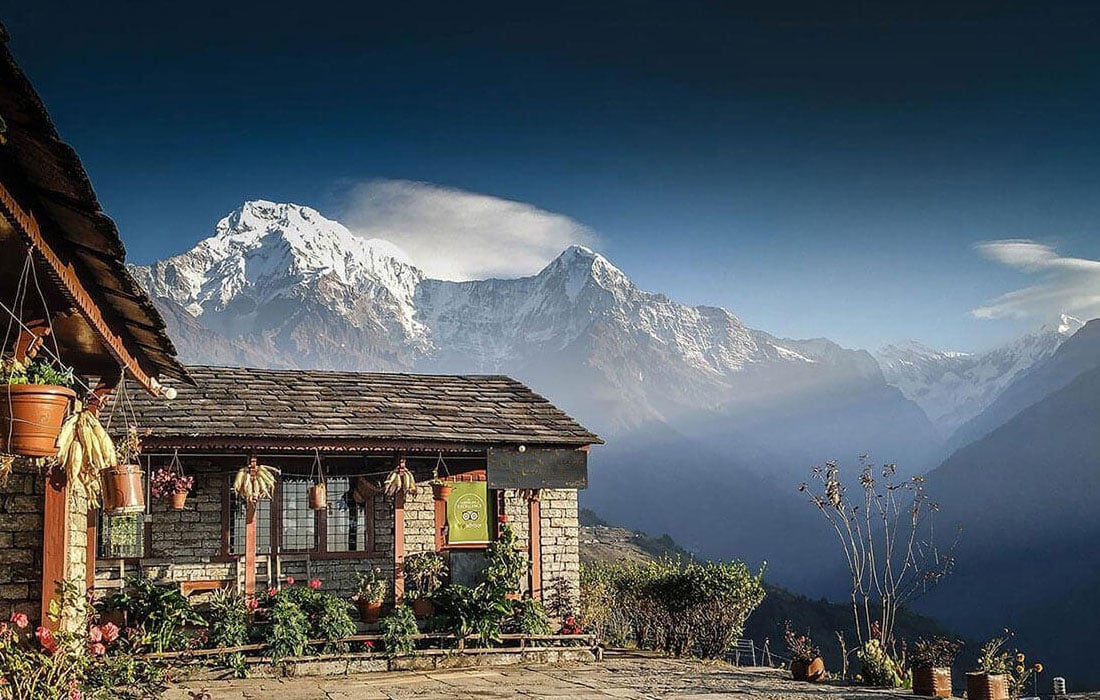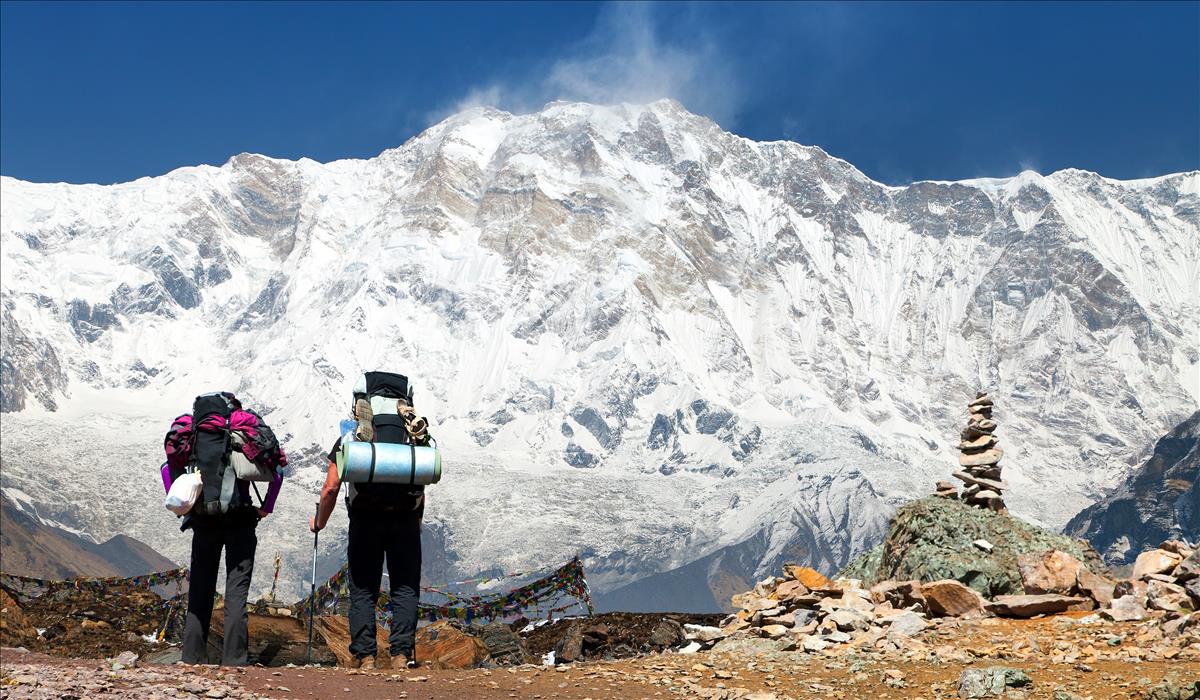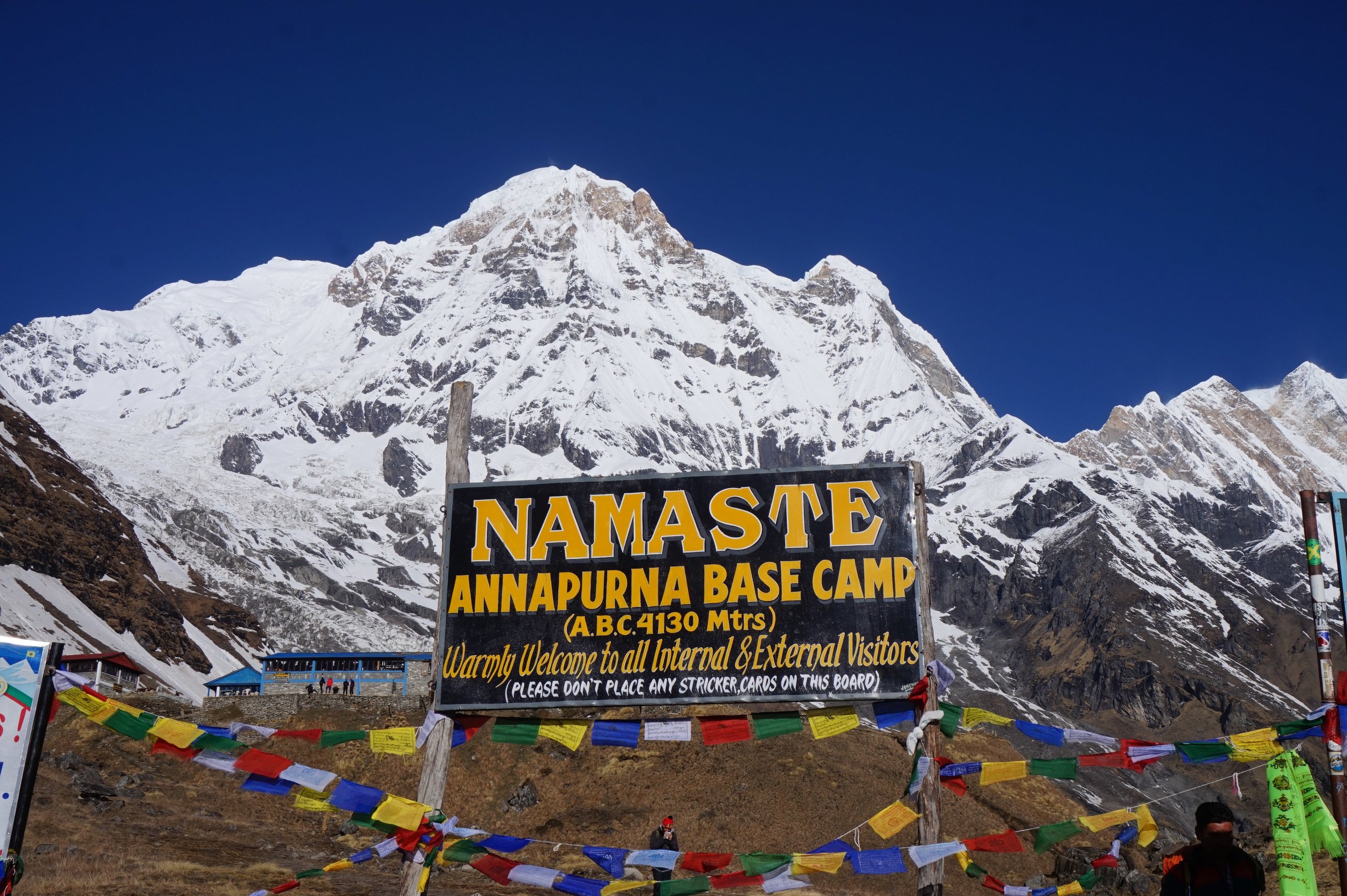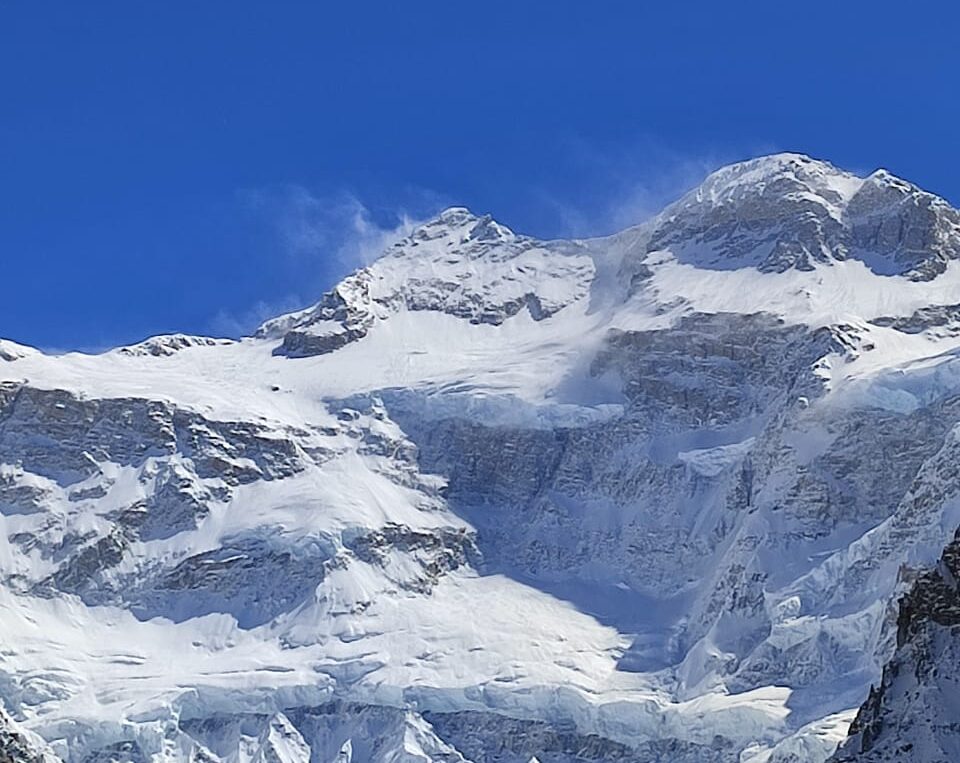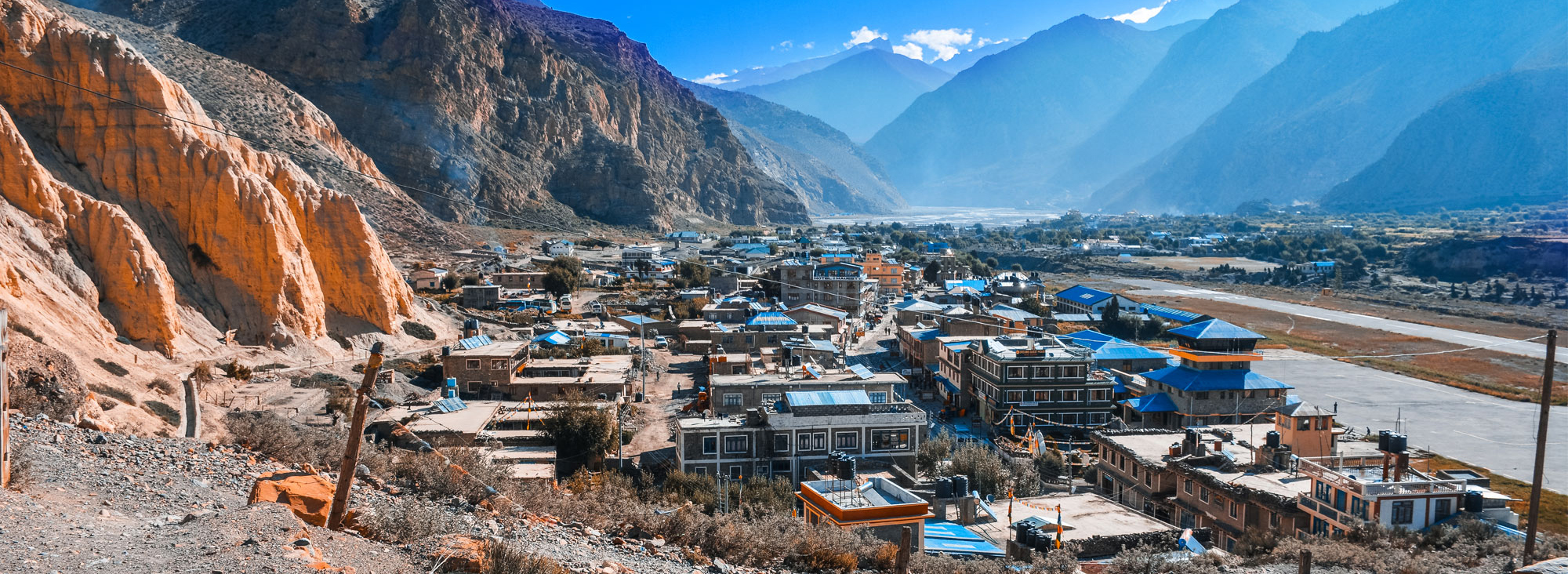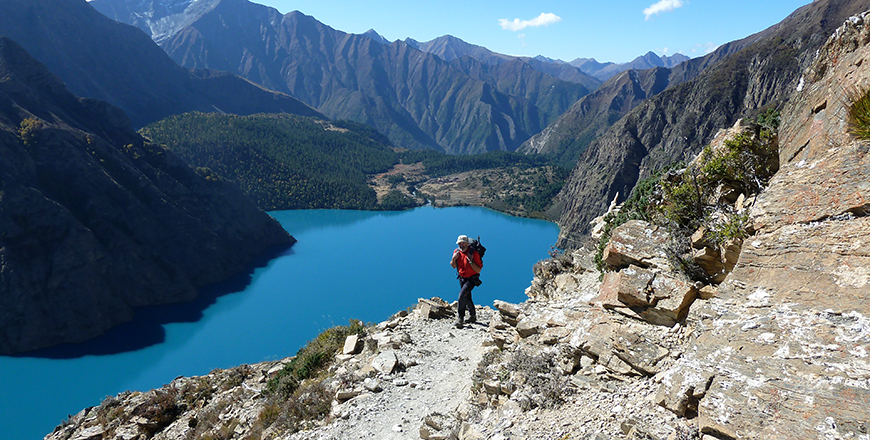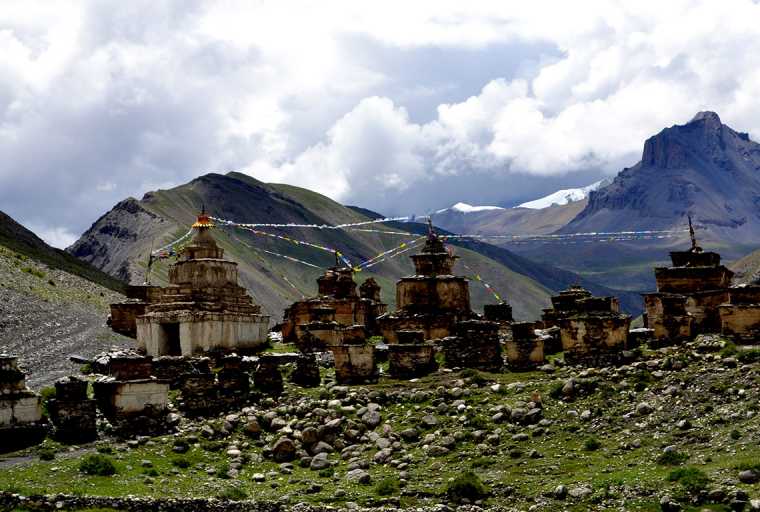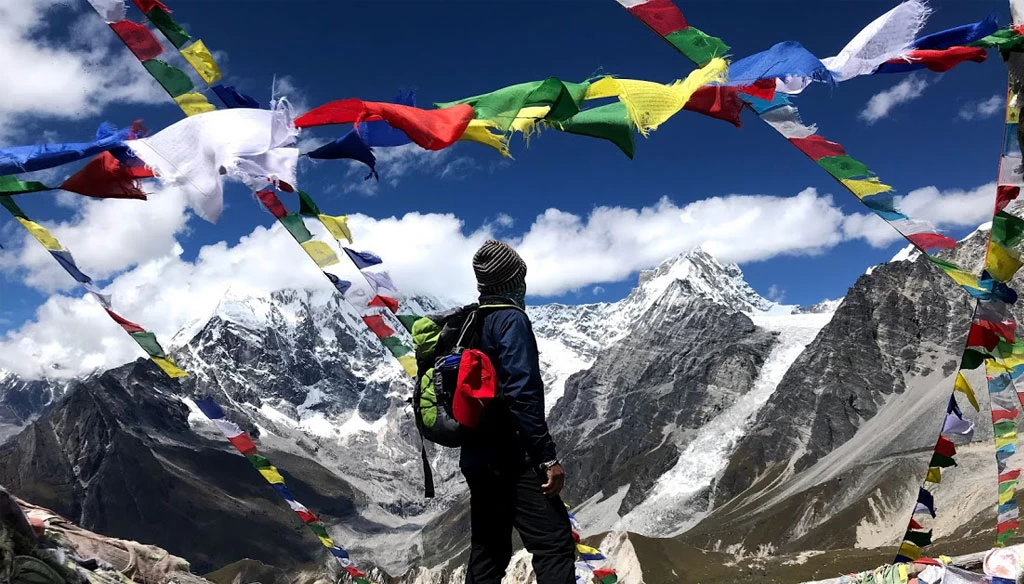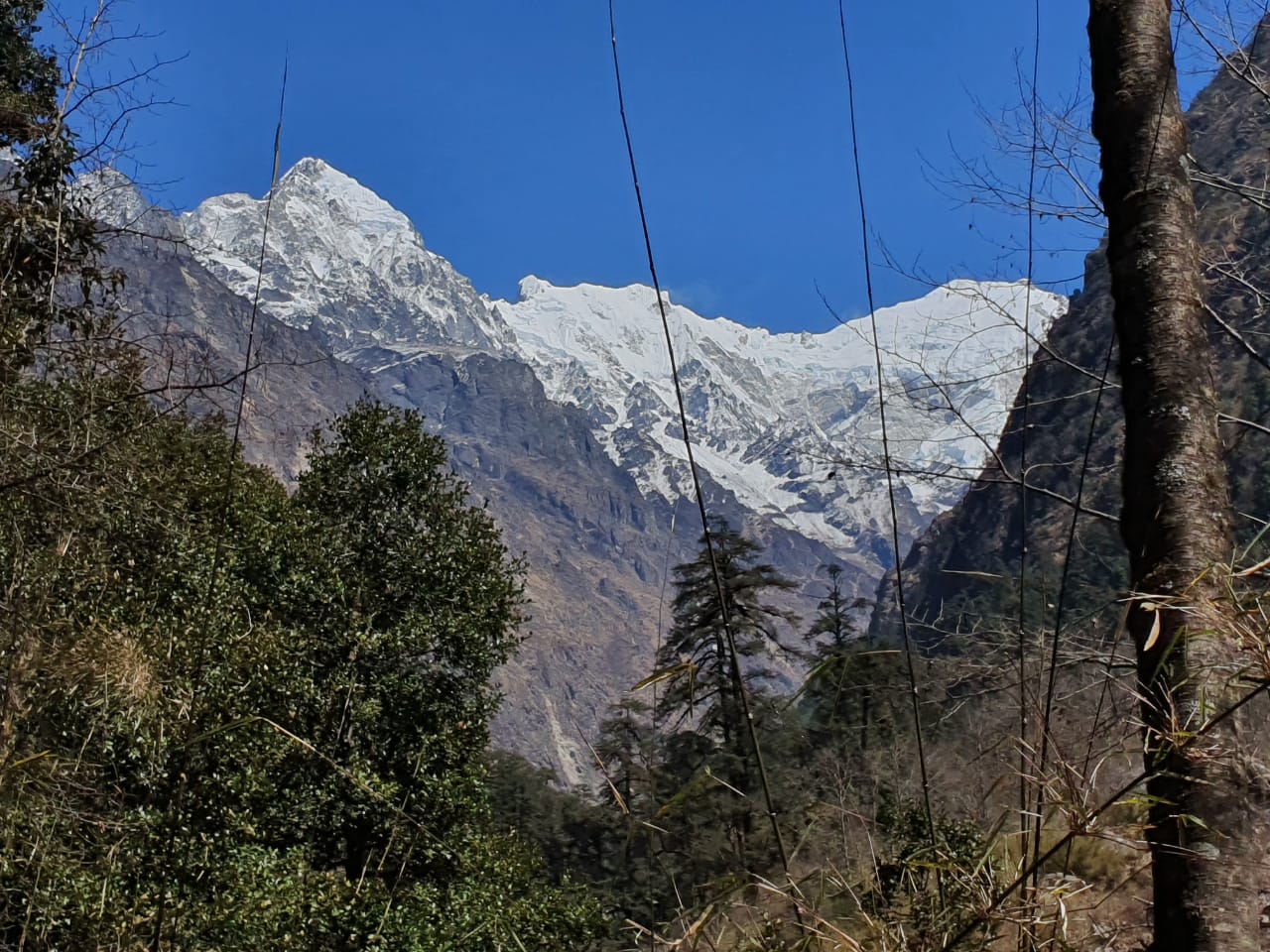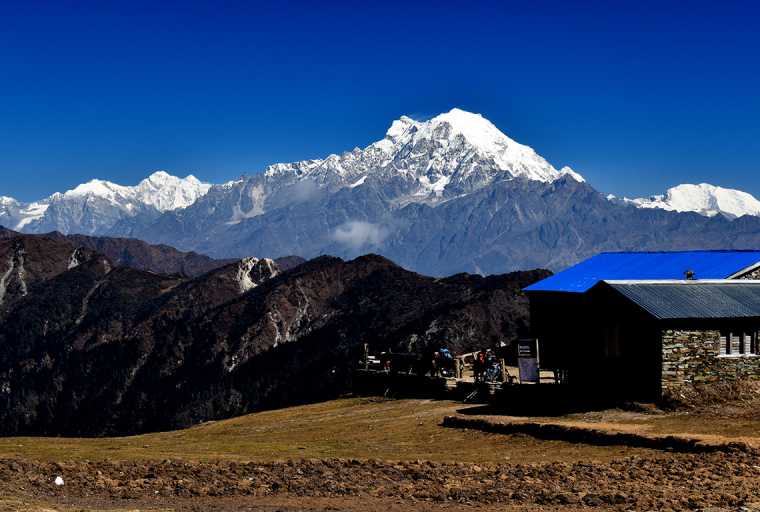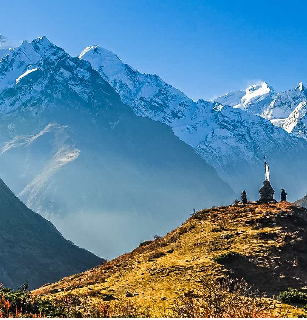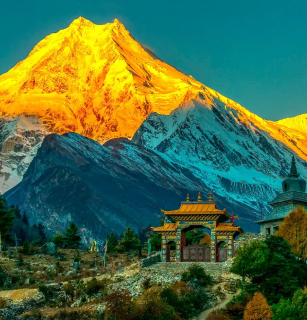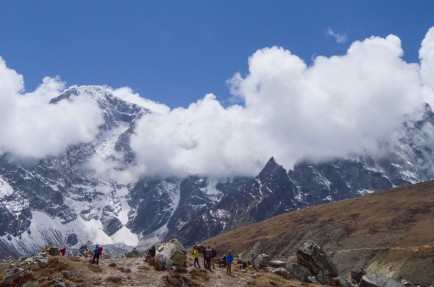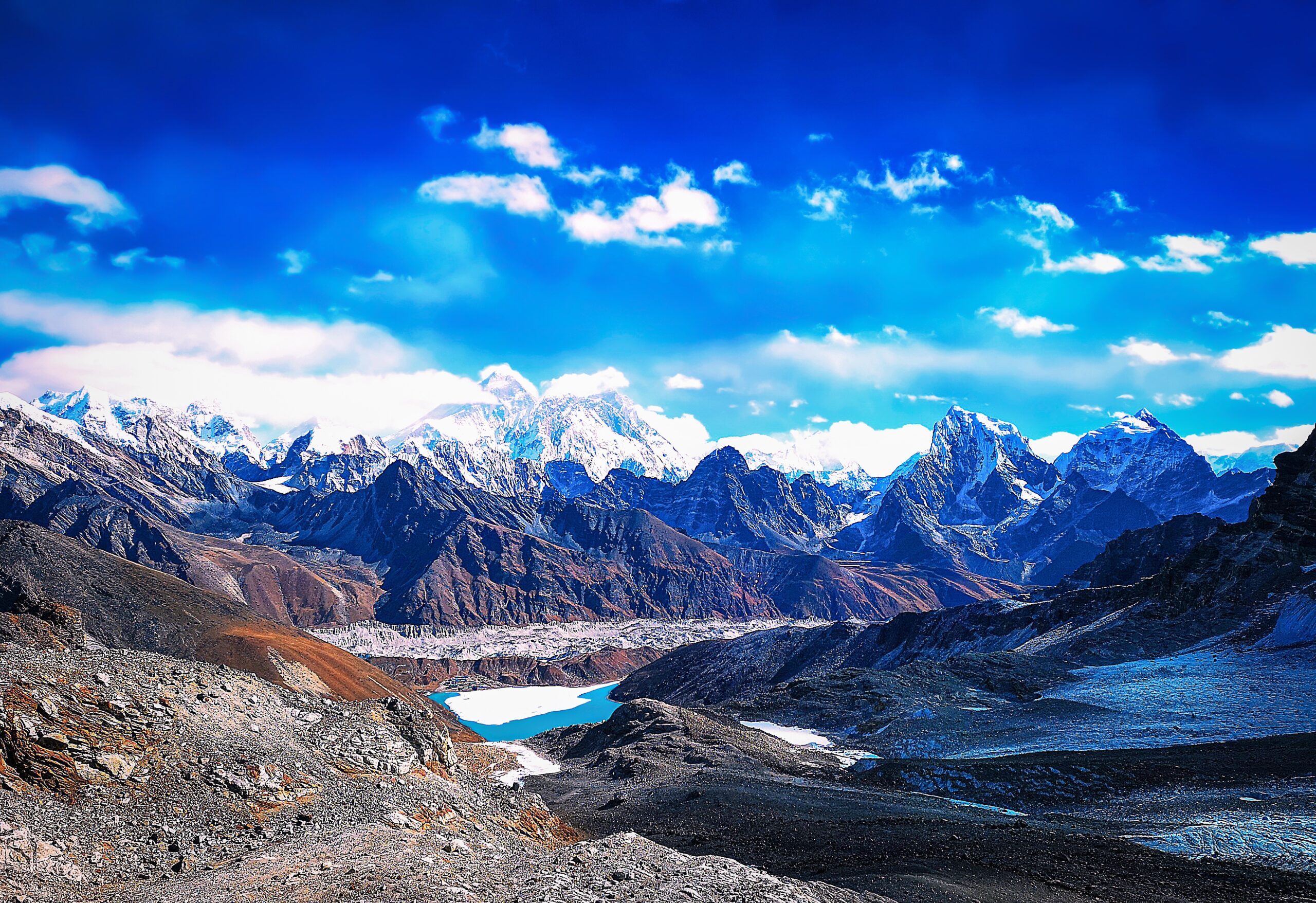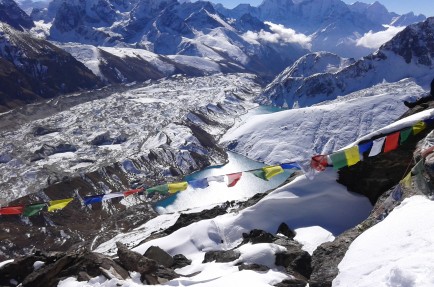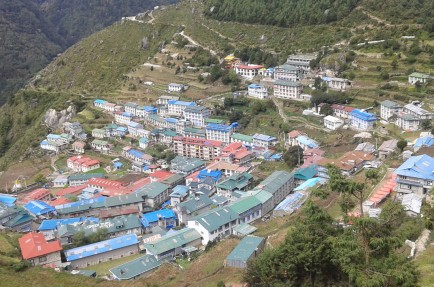4,065m/13,350ft
MAX-ALTITUDEKhumbu,Nepal
LOCATIONGROUP-SIZE
Minimum 02DIFFICULTY
ModerateDrive from Kathmandu to Dhap
Drive Time: 7-8 hours under normal road condition
Embark on an early morning journey from Kathmandu to Dhap, navigating a Japanese-built mountain road alongside the Sun Koshi River. After crossing the river and ascending to Okhaldhunga, a 3-hour drive will bring you to the Dhap trailhead. The road trip takes us into the Gangatic Plains of the Terai, 50km north of the Indian border. The route diverts from the main highway, ascending the mountainous, winding road to the trailhead, Dhap, where we’ll stay for the night.
Overnight: Simple Tea House/ Lodge
Trek to Jhapre
Trek duration: 4-5 hours
Altitude of Jhapre: 2,920m
The well-paved road from Okhaldhunga ascends from 5,118 feet (1,560 m) to 9,186 feet (2,800 m) at Dhap, marking the starting point of your trek. Approaching Sigane, you’ll be greeted by the familiar peaks of the Numbur Himal section of the Himalayas. From Sigane, the first village you’ll reach is Jhapre, which stands at 9,580 feet (2,920 m) and is perched above a deep valley with nice views of Everest and Numbur Himal. Be sure to visit the town’s monastery and stupa before you relax for the evening.
Overnight: Simple Tea House/ Lodge
Trek from Jhapre to Pikey Base Camp
Trek duration: 5-6 hours
Altitude of Pikey Base Camp: 3640m
Following Japre, the path ascends to a grassy ridge at Bhulbhule, where a solitary unnamed lodge offers splendid views of the Everest range. Beyond Bhulbhule, the trail diverges, and turning right leads to Pikey Peak. Enroute, you’ll encounter old yak houses and an extended Mani stone wall. The trail continues along the hillside beneath Taklung Danda, navigating through a picturesque forested path with many rhododendrons. When you leave the pink flecked canopy of the forest, you’ll be about two hours from the Pikey Peak base camp. From here, it’s a brief climb to the summit at 4065 m / 13336 feet. Unless you’ve got an extraordinarily clear evening, it is a wise idea to climb to the summit in the morning for sunrise.
Overnight: Simple Tea House/ Lodge
Trek from Pikey Base Camp to Loding
Trek duration: 7-8 hours
Altitude of Loding: 2515 m
Embark on an early morning ascent along a gentle trail
adorned with prayer flags to reach the summit, where
breathtaking panoramic views wait, stretching from
Annapurna to Kanchenjunga on clear days.
Descend from Pikey Peak, tracing a ridgeline that begins gently and then steepens through the forest until you reach Jase Bhanjyang for breakfast. Post-breakfast; proceed to Loding, navigating through steep forest sections. In Loding, choose from simple yet charming accommodation options.
Overnight: Simple Tea House/ Lodge
Trek from Loding to Junbesi
Trek duration: 7-8 hours
Altitude of Junbesi: 2675 m
Start your day by descending the ridgeline to Jase Bhanjyang for breakfast. Afterward, explore the various descent options to Junbesi. A notable choice is a scenic shortcut trail that veers from the ridge after Jase, leading you steeply through captivating old-growth forest to Taktor. This trail intersects with the Everest Base Camp route from Jiri, where you’ll encounter more developed tea houses and possibly meet fellow trekkers.
A pleasant 2-hour walk along a charming trail brings you to Junbesi, an authentic Sherpa village nestled at an altitude of 2675 m/ 8776 ft. Junbesi serves as the cradle of Sherpa culture and architecture, and the locals hold the Solukhumbu region as a sacred valley. In this remote border area with Tibet, Buddhism thrives, marked by numerous Buddhist monasteries, and you can embark on an afternoon excursion to the Thupten Chholing Monastery.
Overnight: Simple Tea House/ Lodge
Trek from Junbesi to Salleri
Trek duration: 6-7 hours
Altitude of Phaplu: 2459 m
Today, we will descend the trail leading to Salleri. Initially, we will cross the river located at the town’s base and navigate through the forest, ascending to Salung. On clear days, the village provides stunning views of the impressive Mt. Everest, Makalu, and Chamalang.The breathtaking view extends beyond, dispersing throughout the valley and reaching Chiwong Monastery before descending to Phaplu. Following the trail from the hillside’s edge to the stream, we cross the river. On the opposite side, the path ascends to Rigmo, providing a stunning view. After a village stop for breakfast, a final uphill walk leads to Salleri, concluding the day with an overnight stay in a lodge.
Overnight: Simple Tea House/ Lodge
Drive from Salleri to Kathmandu
Drive time: 8-9 hours under normal road condition
As the Short Pikey Peak Trek concludes, our journey now leads us back to Kathmandu.
Following breakfast, we depart from Salleri for an approximately 8-hour drive to the city, passing through Ghurmi Madhya Pahadi Highway via Dhulikhel and Khurkot. During our return, we’ll be treated to views of terraced mountains, dense forests, and flowing rivers. Enchanting waterfalls, picturesque hilltops, and meadows will also grace our route before reaching the valley. Upon arrival, our staff member will transfer you to the hotel, allowing you to rest and unwind.
Overnight: Hotel In Kathmandu
Cost Includes
- All transfers, sightseeing tours & drives as per itinerary in a private tourist vehicle accompanied by English speaking guide from Himalayan Holidays.
- Welcome Garlands of seasonal flowers upon arrival.
- 3 nights stay at hotel (as above) in Kathmandu on twin sharing basis including American breakfast and all taxes.
- Nepali Welcoming Dinner at a Nepali authentic restaurant in Kathmandu.
- Tea House Trek as per Itinerary including all meals, accommodation at Lodges and Tea Houses, and the service of English speaking trek leader and a team of experienced Sherpa assistant/s and a reliable porters.
- Porterage tips to porters upon arrival and departures at the airport.
- Sightseeing tours as per itinerary including applicable monumental entry fees
- Sagarmatha National Park fees.
Cost Excludes
- International airfares and airport departure taxes.
- Nepal entry visa (US$30) per person
- Items of a personal nature such as; laundry, bar bills, alcoholic beverages (except on welcome dinner), extra mileage, optional tours such as Mountain Flights, telephone calls, internet services, personal gratuities as tips to guides, bell-hops or hotel porters, drivers, etc.
- Comprehensive Travel Insurance or “Umbrella Insurance” to cover – Illness, hospitalization, travel medicines, loss of valuables, thefts, change of itinerary, flight and tour cancellations due to unavoidable circumstances and most of all Emergency Helicopter Charter for evacuation purpose.
- Any items that are not mentioned in above the costs include section.
Nepal visa is easily issued from Nepalese Embassy in your country. Nepal also issue on arrival visa for 15 days, 30 days and 90 days charging fee of USD 25, USD 40 and USD 100 respectively. Please carry two passport size photos along with you.
Best season for trekking in Nepal is from March to May and September to November. During this time weather is clear and warm. But, if you like to avoid crowd then best time for your trek will be from May to September.
Yes, we do provide international airport pick up and drop off services. Outside terminal, our staff will be displaying companies play card or your name card depending upon group size, for your convenience.
It is compulsory to have your insurance before you visit Nepal. For trekking and Alpine Climbing you must have High Altitude Insurance. And for Tour and sightseeing you must have travel insurance.
Best season for trekking in Nepal is from March to May and September to November. During this time weather is clear and warm. But, if you like to avoid crowd then best time for your trek will be from May to September.
Difficulty level depends upon the remoteness and altitude of the trekking route. Basically, trekking below 3,000m is easy. Higher the altitude, its more difficult to walk.
In trekking, wide variety of food is available. Teahouses prepare Nepali food, Indian food and Continental food as per menu. All the foods are freshly prepared. We suggest you not to consume meat items during the trekking.
Basically, we accommodate our clients in 3 to 4 star hotel in Kathmandu, Pokhara, Chitwan and other major cities in standard rooms on twin sharing basis. For luxury package we accommodate you in 5 star and beautiful boutique hotels in available places. On trek we accommodate you in best available lodges and teahouses standard rooms on twin sharing basis and occasionally dormitory on busy season.
In teahouse trekking basic facilities are available, with clean rooms, blankets, freshly cooked warm food. Sometimes there will be common toilets and bathrooms outside your room. Warm water is available for shower on extra cost.
In camping trekking, we will use the tents that can keep us warm from -20 degree Celsius to -40 degree Celsius. Tents for toilet, shower, dinning and kitchen will be set up for your convenience. Comfortable trekking chairs, tables and mattress will be available. Fresh and healthy food will be prepared by our professional cook.
Means of transportation depends on places you travel. We have our own fleet of transportation like car, jeep, Hiace and Coaster tourist bus for ground transfer. Domestic airplane and helicopter are used for air transportation.
Weather in the Mountains is highly unpredictable. So we should always be prepared to tackle the cold. From March to May and September to November in the morning and evening temperature will be (from 3000m to 6000m) 0 degree Celsius to 5 degree Celsius, in afternoon it will rise upto 20 degree Celsius to 25 degree Celsius and at night it might fall down till -5 degree Celsius to -10 degree Celsius. Similarly, during winter i.e. December, January and February there will be heavy snowfall in the Mountains dropping temperature till -15 degree Celsius at night. Morning and evening will be around -5 to 5 degree Celsius and temperature will rise upto 15 degree Celsius during day time. And our monsoon season from June to August where we expect heavy and continuous rainfall. But if we go above 3000m altitude ratio of rainfall will decrease. Temperature during day will reach upto 25 degree Celsius high and reduce till 0 degree Celsius to -5 degree Celsius. Morning and evening will be chill from 5 degree Celsius to 15 degree Celsius.
For trekking in the Mountains you will need very warm, windproof, waterproof clothes. You must bring trekking/hiking boot which is comfortable to wear and walk. Beside that quick dry t-shirt, trouser and towel is important.
On average you have to walk 6 to 8 hrs a day covering 10 to 12 km in distance.
Of course, this trip is completely safe for solo travelers. You will have your guide and porter for your assistance; they will definitely take care of you along the trip.
Health and safety of our clients is a major concern of our company. All our guides have got first aid training. Your guide will be carrying first aid kit and satellite phone during the trekking in case of emergency and we can use the helicopter service for immediate evacuation.
Yes, you can use your debit/credit card in major cities like Kathmandu and Pokhara. We suggest you to carry cash (Nepali Currency) during the trekking for your personal expenses.
If its Altitude Sickness problem then we will immediately carry you down to lower altitude. We will take you to the nearby health post and if the case is serious we will immediately do helicopter rescue and admit in major hospitals in Pokhara or Kathmandu.
We have included rest/spare day in your itinerary to acclimatize in the thin air. Your guide will encourage you to drink more soup and garlic which is believed to help in high altitude. Besides that, your guide will be carrying medicine (Diamox) to reduce altitude sickness.
Giving tips to your guide and porters is a small gesture of thank you for your service. We don’t fix the amount of tips but it’s completely depends on the level of satisfaction from your guide and porters service during your trekking. This small gesture will really help to support their family living. Tipping system in Nepal is 10% of the amount that you paid for your trip.
Yes there are telephones and internet facilities available in the most places during trekking. Your guide is always carrying a mobile phone, you can request him to make international call and in return you can recharge/top-up or give small amount as international call charge.
Yes all your electronic gadgets charging facility is available on your trekking. They do charge NRS 200 to NRS 500 for service.
Yes, it’s possible to extend your trip. You can always let your guide know about it and we will arrange the logistic.

